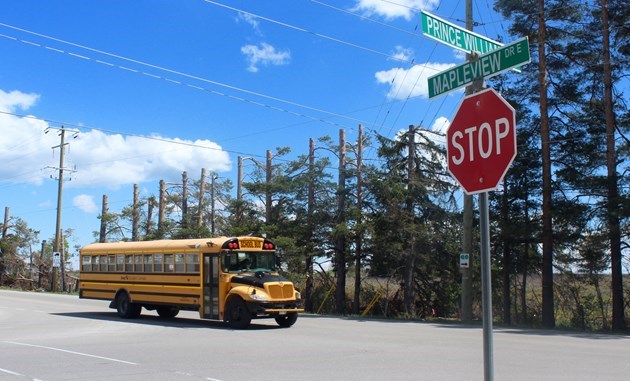THUNDER BAY — A spokesperson for the consortium that oversees school busing in the Thunder Bay area says he's surprised it's taken eight years for a Transport Canada study of school bus seat belts to be made public.
CBC's The Fifth Estate disclosed that the report found that seatbelts could help prevent injuries to children in rollovers, crashes where a pickup truck or larger vehicle slammed into the side of a bus, or collisions causing "significant vertical lift of the occupant compartment."
The study proposed further research on the use of school bus seatbelts to make sure they wouldn't increase the risk of injury.
Craig Murphy, manager of Student Transportation Services of Thunder Bay, said "Like most people, I hadn't heard of the 2010 study showing that compartmentalization may not be as effective during side impacts or rollovers."
Murphy said the school bus industry has relied on Transport Canada's position that there was "no evidence" that 3-point seatbelts would improve the overall level of safety.
The understanding until now, he said, is that children are protected during a collision by the absorption of force by the built-in infrastructure—known as compartmentalization—incorporating the seat height, distance and padding.
Murphy feels the attention the report has now received "represents an opportunity to participate in a broader conversation about the importance of school bus safety with regulators at Transport Canada and the [provincial] Ministry of Transportation."
He stressed that the decision to put seatbelts in school buses is not a local one, and that any decision to require them would come from Transport Canada, or through a regulation change in Ontario's Highway Traffic Act.
"It will take a great deal of consultation with stakeholders to determine next steps. Certainly if there's an opportunity locally for us to have input into that process, we'll be happy to participate."
Murphy said it's fortunate that there has never been a school bus collision in the city area in which seatbelts would have offered more protection than compartmentalization.
"The vast majority of collisions with a school bus involving another vehicle or object have been 'front or back,' and certainly compartmentalization is designed to absorb" that kind of impact.
According to Murphy, over the years some parents have questioned why buses aren't equipped with seatbelts, but officials have only been able to refer to a 1984 Transport Canada study that found seatbelts not only would not protect children, but could actually cause more harm in certain kinds of collisions.
This week, Transport Minister Marc Garneau told the House of Commons he is ordering his officials to re-examine the issue.
The Ontario School Bus Association issued a statement saying that since 2016 it has been calling on Transport Canada to update and publicize its school bus occupant research.
"As an association, we support using 3-point belts on school buses," the statement said. A spokesperson clarified for Tbnewswatch on Wednesday that "it is a position we have transitioned to over time but has only recently been finalized."
Although Canada currently doesn't require seatbelts on school buses, last June the government introduced new guidelines to regulate their use by bus operators who choose to install them.
The technical requirements say that restraints must not compromise existing safety features of the compartmentalized seats.
